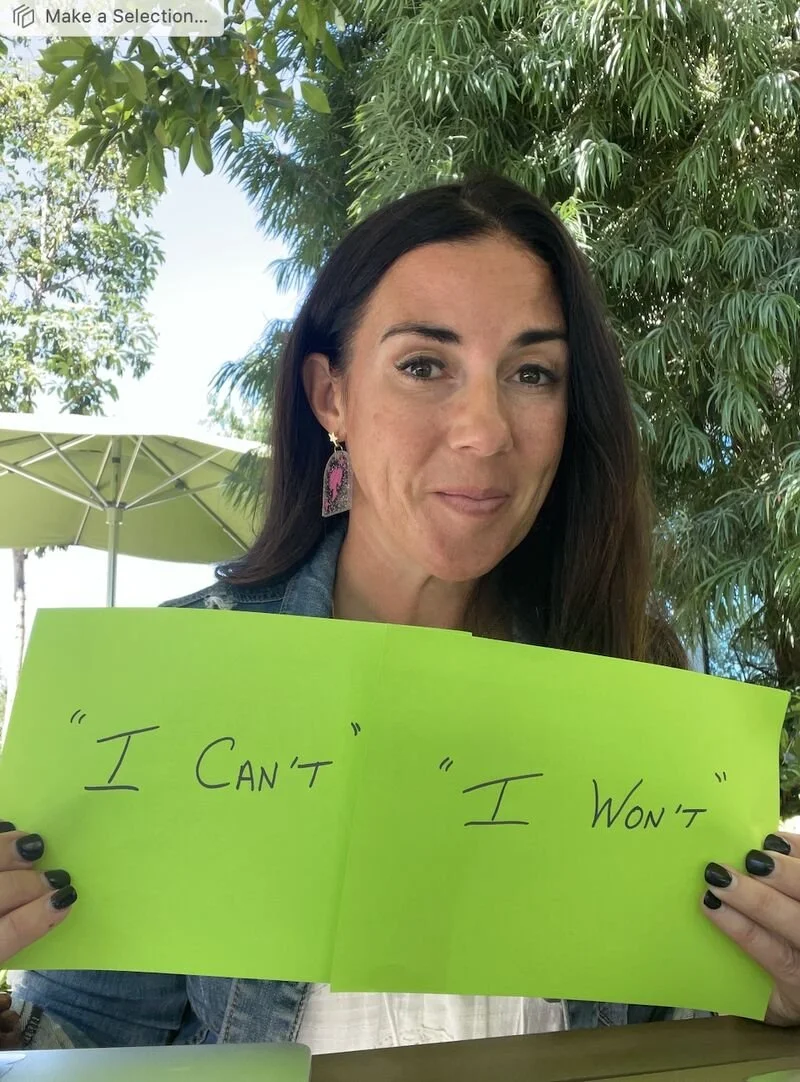The Power of Words: Understanding the Difference Between Can't and Won't
Just Something #10
There is a big difference between CAN'T & WON'T.
Just Something More #10
I have had moments where I said I can’t, or I won't do something. There is nothing wrong with using these words, but there is a losing way and a winning way to use them.
Losing:
I can't start my own business.
I can't make that many calls.
I won't get on board with that.
Winning:
I can't understand why I'm not more successful, so I am going to ask for feedback.
I can't let this opportunity pass me by.
I won't walk away from this even though it’s hard.
The losing side can be seen as excuses, while the winning side takes responsibility for actions. I choose winning. Where do you stand?
The Power of "Can't" and "Won't"
The words "can't" and "won't" are often used interchangeably, but they carry distinct meanings and implications. Understanding the difference between these words can help us recognize whether we are genuinely unable to do something or simply unwilling to make the effort. This distinction is crucial for personal and professional growth.
The Impact of "Can't"
When we say "can't," we are often implying that we lack the ability, resources, or permission to do something. This can be a genuine reflection of our current limitations, but it can also be a way to avoid taking action. Recognizing when "can't" is a self-imposed barrier is the first step toward overcoming it.
The Impact of "Won't"
On the other hand, "won't" reflects a decision not to take action. It indicates a choice based on preferences, priorities, or fears. Acknowledging when we are choosing not to do something rather than being unable to do it can empower us to make more intentional decisions.
Transforming "Can't" into "Can"
Identify the Barrier: Understand what is truly preventing you from taking action. Is it a lack of skills, resources, or confidence? Identifying the root cause can help you address the barrier more effectively.
Seek Solutions: Once you know the barrier, look for ways to overcome it. This might involve learning new skills, seeking help from others, or finding alternative resources. Transforming "can't" into "can" often requires creativity and persistence.
Take Small Steps: Break down the challenge into manageable steps. Achieving small milestones can build confidence and momentum, making the overall goal more attainable.
Embracing "Won't" with Intention
Reflect on Your Choices: Understand why you are choosing not to take action. Is it due to fear, discomfort, or misalignment with your values? Reflecting on your choices can provide clarity and insight.
Align with Your Values: Ensure that your decisions align with your long-term goals and values. Choosing "won't" for the right reasons can be empowering and can help you stay focused on what truly matters.
Communicate Clearly: When you decide not to do something, communicate your reasons clearly and confidently. This can help manage expectations and maintain healthy relationships.
Personal Reflections
Reflecting on personal experiences with "can't" and "won't" can provide valuable insights into your decision-making process. For example, recognizing when you have used "can't" as an excuse can motivate you to take action and overcome obstacles. Similarly, understanding when "won't" is a deliberate choice can help you set boundaries and prioritize your well-being.
Professional Contexts: Can't and Won't at Work
In professional settings, distinguishing between "can't" and "won't" is equally important. Saying "can't" might indicate a need for additional training or resources, while "won't" can signal a need for clearer communication of priorities and expectations. Understanding this difference can enhance your effectiveness and collaboration at work. For more information from Harvard Business Review on the power of words, check out this article.
Conclusion
The words "can't" and "won't" carry significant power in shaping our actions and attitudes. By recognizing the difference between them and using them intentionally, we can take greater control of our lives and make decisions that align with our goals and values.
In dedication to: Judy and the inspiration to think about this more!


